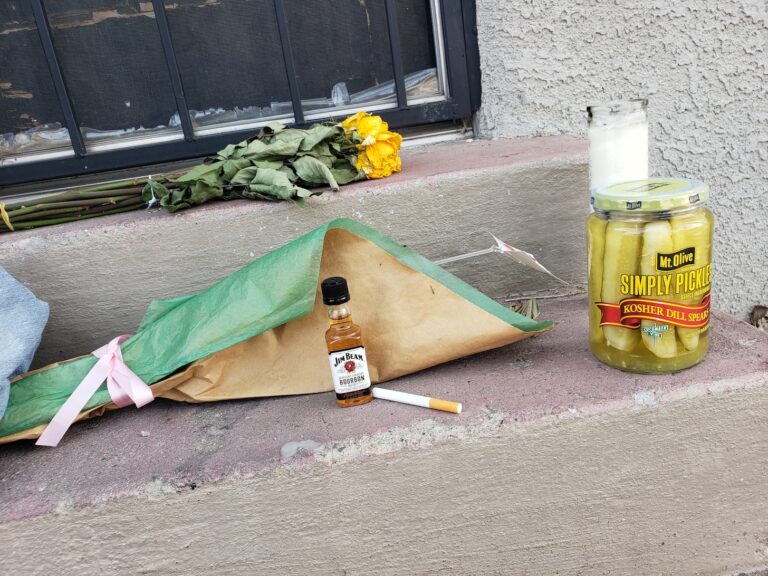Every night, when the trains slip through Albuquerque, Jill Gatwood can hear their whistles from her North Valley home. She lives just a couple of blocks from the tracks, near Fourth Street and Griegos. For Gatwood, the tone is comforting, something that signifies stability—and Albuquerque. "It’s the history of the city," she says. The railroad, she wrote in her June 15 letter to the Alibi , is largely responsible for the Duke City’s existence. Her grandfather was a lobbyist for Southern Pacific Railroad in New Mexico, perhaps figuring into her affinity for the sounds associated with the rail. "A train whistle is a certain specific tone," Gatwood says. "It’s always the same, and most people find it to be kind of romantic."Though City Councilor Martin Heinrich lives miles from the tracks, from his front porch, he too can hear the whistle. Albuquerque used to be a railroad town, he says, but rail traffic decreased in the last 30 to 50 years. So did the noise. As the Rail Runner develops, those whistles will happen more often, he says. That could become a real problem for people living near the tracks. That’s why his proposal to turn the city’s crossings into quiet zones will go before the Land Use Planning and Zoning Committee on Monday, Sept. 18. If the measure makes it out of the committee alive and well, it will head to the Council for a vote, either on Sept. 18 or on Wednesday, Oct. 4. Heinrich expects broad support for the bill, which would modify the nine rail crossings in city limits within five years. Two possible treatments exist that would transform the intersections into quiet zones. One requires removing the two gates that block approaching lanes and replacing them with four gates to completely close off both directions of travel, says Chris Blewett, project manager for the New Mexico Rail Runner Express. This would prevent vehicles from doing an "S" maneuver, weaving their way around the barriers. That option would cost about $300,000 per crossing, and each would take between two and three weeks to accomplish, he says. "It’s kind of like installing a traffic signal," he says. "It’s not anything all that complicated."The other treatment requires the addition of an unmountable median that would extend 100 feet in each direction. It would take more survey work to determine if this could be a cheaper option, Blewett says. "There’s no way to say what it would cost," he says. "It may be simple in some cases. It may be complicated in others." Riskier crossings might need both modifications. A quiet zone is required by federal regulations to be a half mile long. There are crossings in Albuquerque that are closer together than a half mile, which might cut down on the amount of work that would go into making them quiet zones.But $300,000 for nine rail crossings, a total of $2.7 million, sounds like a lot of money to Gatwood. "Even if I really hated the sound, that would be really low on my list of priorities," she says. The money wouldn’t come from the city alone, according to Heinrich. "It looks like there will be substantial moneys available through the state and other sources," he says. Tim McGivern, a real estate broker with EDo Spaces and former managing editor and news editor of the Alibi , began pulling for the quiet zones independently of Heinrich early this year. McGivern, a friend and neighbor of Heinrich’s, meets with the councilor regularly, he says, though he doesn’t recall specifically discussing the quiet zones with him. In May, McGivern organized a community meeting with state legislators, members of the Downtown Action Team and some city councilors, among others, to discuss quiet zones in Downtown Albuquerque. In August, a follow-up meeting examined the possibility of expanding quiet zones across the state. The quieting of the train whistles is a quality-of-life issue for people who live in the Downtown corridor, says McGivern. The Alameda North Valley Neighborhood Association has also come out in strong support of the quiet zones. McGivern says meeting basic infrastructure needs seems like a very reasonable way to spend money, especially when it’s put in the context of economic development. "It’s also encouraging to see the city, the state and the federal government working together on this issue," he says. "That’s what it’s going to take."Quiet zones weren’t an option until last year, according to Blewett. Since guidelines were established for their creation by the Federal Railroad Administration on June 24, 2005, "there are lots of communities across the country that have sought relief from train horn noise," Blewett says. It’s important to note, adds McGivern, that quiet zones do not make crossings less safe. Even in a quiet zone, a locomotive engineer still has the option to blow the horn if he or she feels it’s necessary, Blewett says.
To contact the author, e-mail marisa@alibi.com.




